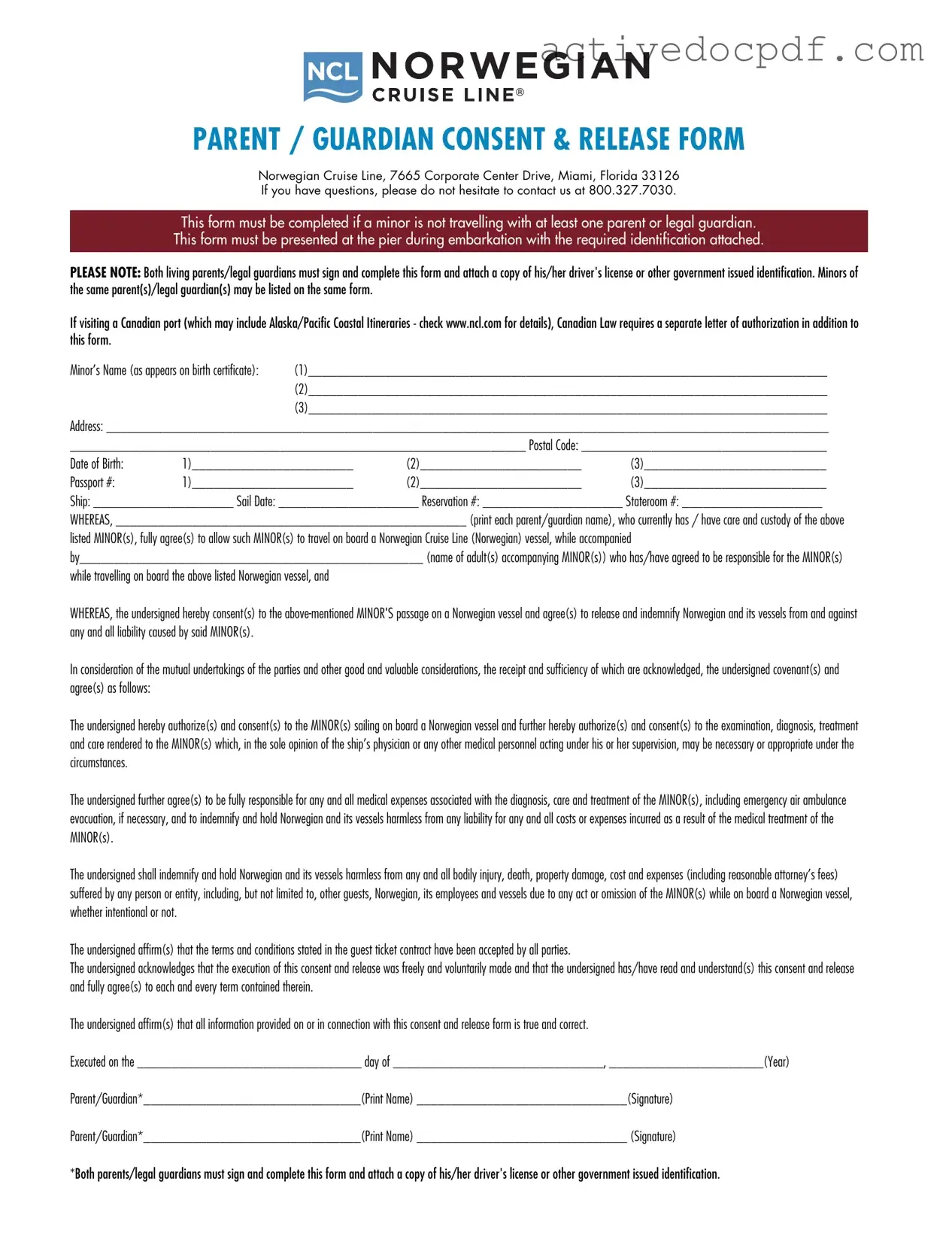The NCL Parental Consent form is a document that allows parents or guardians to grant permission for their child to participate in activities or programs associated with the NCL (National Charter League). This form ensures that parents are informed about the activities and that their consent is obtained before their child engages in them.
This form is necessary for several reasons:
-
It protects the rights of minors by ensuring that parents are involved in decisions regarding their child's participation.
-
It provides legal protection for organizations by confirming that they have received permission from parents.
-
It outlines the activities involved, allowing parents to make informed decisions.
The form must be signed by a parent or legal guardian of the child participating in the NCL activities. In cases where a child has more than one legal guardian, all guardians may need to provide consent.
The form typically requires the following information:
-
The child's full name and date of birth.
-
The parent or guardian's name and contact information.
-
A description of the activities for which consent is being granted.
-
Any medical information or special considerations that may be relevant.
-
The signature of the parent or guardian and the date of signing.
The completed form can usually be submitted in several ways, depending on the organization's requirements. Common methods include:
-
Submitting the form online through a designated portal.
-
Mailing a physical copy to the organization.
-
Handing it in person at an event or meeting.
If the form is not submitted, the child may not be allowed to participate in the planned activities. Organizations often require this consent as a prerequisite for involvement, ensuring that all legal and safety protocols are followed.
Yes, parents or guardians can revoke their consent at any time. To do so, it is important to communicate this decision to the organization in writing. This ensures that the organization is aware and can take appropriate actions regarding the child's participation.
Deadlines for submission vary by organization and activity. It is essential to check the specific guidelines provided by the NCL or the hosting organization. Submitting the form as early as possible is advisable to avoid any issues with participation.
What if my child has special medical needs?
If your child has special medical needs or requires accommodations, this information should be included on the NCL Parental Consent form. Providing detailed information helps the organization prepare and ensure a safe environment for your child.
The NCL Parental Consent form can typically be obtained from the organization's official website or directly from the event coordinator. It is important to use the most current version of the form to ensure compliance with any updated requirements.
